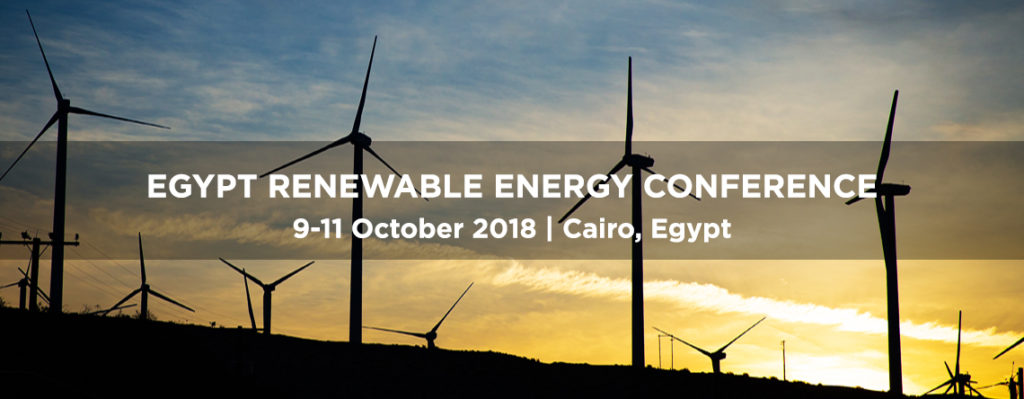Egypt’s future economic development and stability strongly hinges on the ongoing development of a healthy energy sector. To meet burgeoning energy demand, the Egyptian government’s Integrated Sustainable Energy Strategy, ISES 2035, involves stepping up the use of renewables and improving energy efficiency in the power sector. The Egyptian government has set targets for renewables to make up at least 42% of the country’s electricity mix by 2035, based on rapid solar and wind deployment. A study by the International Renewable Energy Agency (IRENA) examines the policy, regulatory, financial and capacity- related challenges that the country has to address in order to achieve such targets.

As the most populous country in the Middle East, Egypt faces rising energy demand driven by rapid population growth and an expanding economy. Renewable Energy is a best prospect industry sector for 21st century Egypt since it possesses an abundance of land, sunny weather and high wind speeds, making it a prime location for renewable energy resources. With a renewable energy infrastructure market potentially worth billions of dollars, Egypt intends to supply 20 percent of generated electricity from renewable sources by 2022, with wind providing 12 percent, Hydro power 5.8 percent, and Solar 2.2 percent. The Egyptian government has announced its renewable energy plan for 2035 to include an addition of 67 GW (representing 45 percent of total generated electricity), of which 31 GW comes from PV, and 20 GW from wind. Their solar energy plan aims to install 3.5 GW by 2027; including 2.8 GW of PV (photovoltaic) and 700 MW of CSP (concentrated solar power). There are plans to generate 7.2 GW (12 percent of generated electricity) from wind by 2022. The plan envisions significant private sector involvement, noting that the private sector will take the lead on 67 percent of the plan. Over the next three to five years, the Ministry of Electricity and Renewable Energy plans to add 51.3 GW to currently installed capacity.
The New & Renewable Energy Authority (NREA) plays a strategic role in the government’s renewable energy plans, with about 500 MW of wind power plants in operation and 1340 MW under implementation and development. This is expected to contribute substantially to the rapid expansion of wind power capacity. Three privately owned independent power producers (IPPs) with total generation capacity of about 2.5 GW, started operations in 2002- 2003 under 20-year long power purchase agreements with EEHC. The Egyptian government renewable energy plans for 2015-2023 include 3.2 GW of government projects; 1.25 GW under BOO mechanisms, and 920 MW as IPPs. In January 2017, Egypt selected 67 companies to take part in developing 4.3 GW of renewable energy projects; currently, pre- qualified companies are in the land-allocation process.
Wind Energy
Egypt enjoys excellent wind based energy supply conditions along the Suez Gulf. With an average wind speed of 10.5 m/sec, Egypt is one of 38 countries in the world with a published National Wind Atlas. In cooperation with Germany (KFW), Denmark (DANIDA), Spain, and Japan (JICA) a series of large-scale wind farms have been established since 2001, with a total generating capacity of 550 MW. Implementation of the Spanish project in Jebel El Ziet took place in 2013 creating a huge increase in Egypt imports for renewables that year, which were mainly wind generators imported from Spain. The Egyptian Government is planning to provide 12 percent of electricity supplies (6.8 GW) through generated wind energy by 2022.
In 2014 the implementation of a JICA wind project started with expectations to raise imports by US$200 million. Another 540 MW project is still under construction at the Gulf of Suez, with an additional 580 MW financing project in place, also at the Gulf of Suez. A feasibility study was conducted in 2018 for another 200 MW project in the West Nile region. Even more projects are in the pipeline, in cooperation with Germany, AFD, EIB and EU (200 MW), MASDAR (200 MW), Germany and AFD (200 MW), and also with Japan (200 MW). Recently, the GOE allocated an area of about 7,845 square kilometers in the Gulf of Suez region and along the Nile Banks for NREA to undertake additional wind energy projects.
Solar Energy
Egypt is considered to be a “Sun Belt” country. According to Egypt’s Solar Atlas a direct solar radiation factor of 2,000 to 3,000 kWh/m2/year is readily available. The sun shines 9-11 hours a day from North to South Egypt, with very few cloudy days. The first Solar Thermal Power Plant project, at Kuraymat, was built in 2011 with a total installed capacity of 140 MW and solar share of 20 MW, based on parabolic-trough technology. It is integrated with a combined-cycle power plant using natural gas. The power plant was financed from the Global Environmental Facility (GEF) and the Japan Bank for International Development. Since March 2015, a 10 MW power plant has been operating in Siwa and additional power plants are expected to be implemented and operational over an agreed time frame.
Leading Sub-Sectors for Renewable Energy Offer Ongoing Business Opportunities: Opportunities for future business projects and opportunities exist, in the subsidiary and interdependency areas, for ongoing provision of infrastructure, major construction and equipment supply and services. These include, Wind turbines, Wind towers, Photovoltaic panels and all related technologies, as well as Concentrated and dedicated solar power equipment, backend technologies, supply and maintenance services.
Opportunities: Egypt’s Solar Energy Plan, was approved in 2012, by the GOE. It includes projections for adding 3.5 GW (2.8 GW CSP and 700 MW PV) of solar energy generation by 2027. The Ministry of Electricity and Renewable Energy signed seven memoranda of understanding worth US$500 million for solar and wind projects throughout Egypt. The GOE announced an interim target for the first regulatory period (2015-2017) to contract 4,300 MW of both solar and wind energy, and a feed-in tariff (FIT) which will allow Egypt to procure 4.3 GW of solar and wind power production by 2017. This breaks down into 300 MW from small solar systems, 2,000 MW of medium- and large-size solar plants, 2,000 MW of medium- and large-size wind plants.
According to the Egypt’s Wind and Solar Atlas, there are prospective opportunities and great potential for Wind and Solar plants in the East and West Nile areas that will produce around 31,150 MW from wind based generation and 52,300 MW from solar energy.
Egypt is currently considering financing and feasibility studies for these future projects:
1. A Solar-thermal power plant using CSP technology for both electricity generation and
water desalination. Solar-thermal power plant for industrial purposes. 2. Designing a technical-financial mechanism to promote the use of solar water heaters in
Egypt’s residential sector.
3. Local manufacturing projects for renewable energy equipment and technologies.
The ‘Renewable Energy Outlook: Egypt’ recommends seven key actions going forward:
● Update energy and power sector strategies to reflect the growing cost advantages and other benefits of renewables;
● Reflect the potential of biomass in future updates of the energy strategy;
● Streamline regulations and clarify institutional roles and responsibilities for wind and solar development;
● Reform the current market framework to improve project bankability;
● Bundle renewable energy projects to strengthen risk mitigation and ensure their financial viability;
● Conduct comprehensive measurement campaigns for solar and wind potential;
● Develop a master plan for enhancing local manufacturing capabilities and create a vibrant domestic renewable energy industry.










